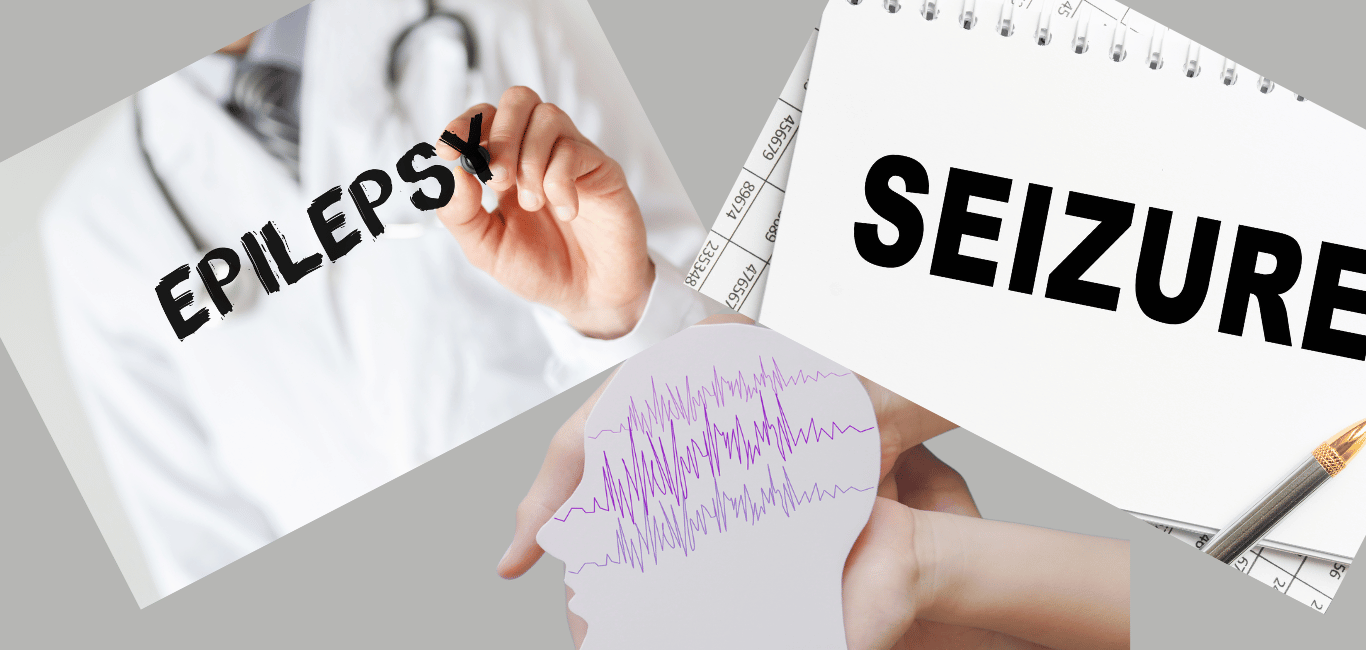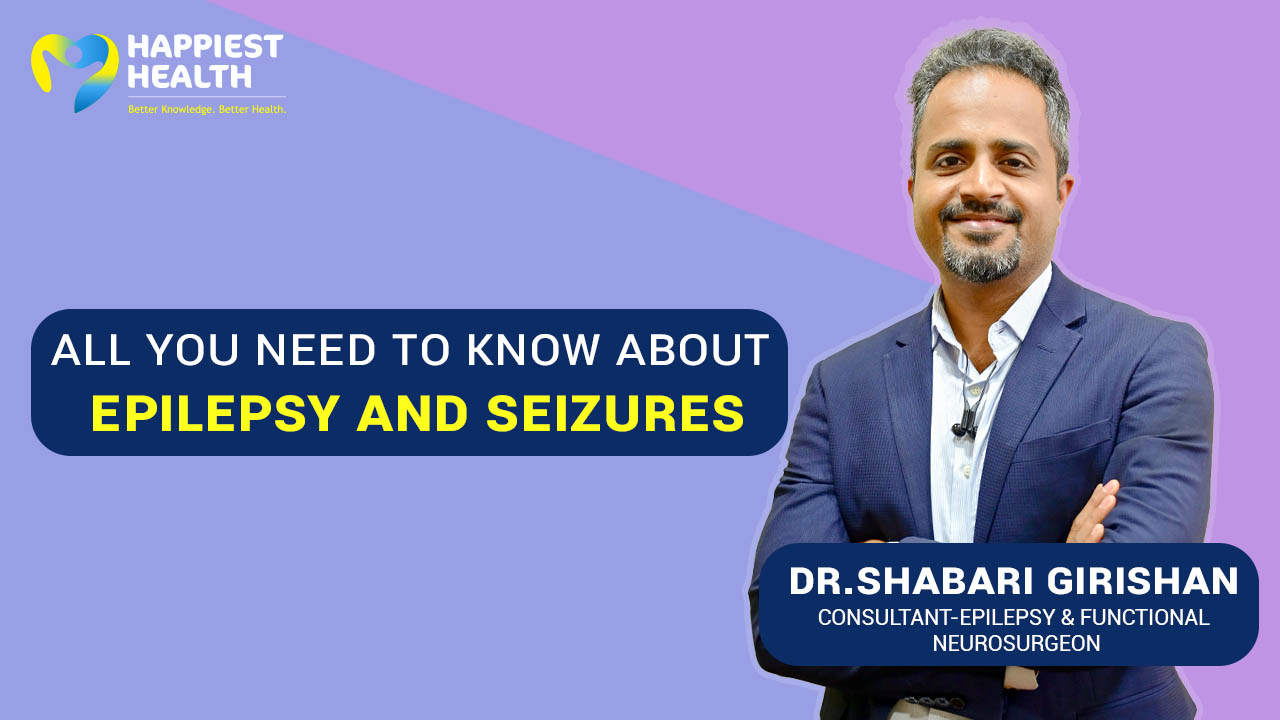
In November 2021 when Sanjana (real name withheld on request), a 25-year-old techie, had a seizure in her village near Mangaluru in coastal Karnataka, those around her didn’t know what to do. She was breathing and had no jerks, she was frothing and was unconscious, typical sign of epilepsy. She regained consciousness later, but felt acute fatigue and uneasiness.
The next day, hospital doctors confirmed she had had seizures and then put her on medication. The MRI of the brain showed no noticeable malfunctioning. One of the first things the doctors told the family was about how to handle seizures in the future. “I have kept my emergency medicines with me always,” Sanjana told Happiest Health, adding that the neurological complication needs immediate medical management.
Epilepsy is a sudden loss of consciousness associated with abnormal movements of the body, says Dr NK Venkataramana, founder chairman and director Neurosciences, Brains Super Speciality Hospital, Bengaluru. The components of the seizure are hurried breathing, a sudden cry followed by the rolling of eyeballs upward with loss of consciousness and the person falling down. There will be jerky movements of the limbs either on one side or both the sides,” he says.
In case of Epilepsy
Dr Venkataraman says the attack lasts for a few seconds. At the end, a person might remain quiet or pass urine depending on the severity of the attack. They usually regain consciousness at variable periods of time lasting from few minutes to less than half an hour. “Once they regain consciousness they will not remember about the episode and at times remain in a confused state for a while,” he says.
That was exactly Sanjana’s state too. “When I woke up, I didn’t know what had happened,” she says. “But it was evident that there was froth and blood coming out. The doctors counselled me well and I was told that it may have been either due to acute stress or a neurological symptom post-Covid, as all of my other parameters have remained normal.”
Dr Pawan Ojha, senior consultant, neurology, Fortis Hiranandani Hospital, Vashi, Navi Mumbai, says in case of a seizure, when a person falls, there will be loss of consciousness and jerky moments. “There are two concerns,” he says. “The epileptic person may have choking, as the airways are closed, and may not be able to breathe. The second concern is of the injury that may have happened due to fall and sudden jerking of the limbs.”
Dr Ojha says the prevention of injury due to fall in an epileptic episode is possible if the persons around them get into action quickly, hold the person and avoid the fall. “But in their enthusiasm to restrain the person, there are often injuries to the limbs,” he says. “In some cases, we see that the epileptic persons sprain their neck and there is shoulder dislocation. Bystanders should not use too much force to restrain the person.”
Role of bystanders
Dr Venkataramana says in a public place the first responsibility is to recognize the episode as a seizure, and the second is to make sure the individual is in a safe place (not near sharp objects, hard objects, chemicals or any other injurious objects). “If the person is in a dangerous location, he should be shifted to a safe place,” he says. “Thirdly, turn the individual to the side, either right or left (recovery position) so that the froth will flow out of the mouth rather than suffocating the individual.”
Dr Ojha says if the epileptic person is still unconscious, they will gradually gain consciousness in a minute or two. “The consciousness will be partial and during that time salivation (frothing) starts from the mouth,” he says. “The salvia should come out rather than entering the windpipe. Frothing takes place because there is too much of secretion and he is unable to swallow. The recovery position is made (turning the entire body and face to one side) so that with gravity the saliva falls outside and does not enter the lungs.”
Dr Venkataramana says quite often the epileptic person clings the upper and lower jaws tightly, often causing tongue bite. “If possible, put a small piece of cloth between the upper and lower jaws protecting the tongue, but at the same time make sure the mouth is not packed,” he says.
Dr Ojha says during an episode of seizure, sometimes the tongue falls back and blocks the airways. “The person can bite the tongue, and part of the tongue can go into the airway blocking the breathing,” he says. “The breathing may also stop when the brain is not providing proper signals during a seizure attack. In such situation mouth-to-mouth breathing can be attempted or a minute or two. In parallel, efforts must be made to take a person to a hospital.”
Dr Venkataramana says it is also important to know what not to do when one comes across a person during an epileptic episode. His list of don’ts include:
- Do not leave the person with seizures unattended
- Do not put your finger in between the jaws or try not to push the tongue inside
- Do not leave the person in a face-up position
- Do not hold the individual tightly as it may cause fracture or dislocation of the shoulder
- Do not pour water into the mouth
- Do not give sharp metallic objects in the hand since the person might injure himself
- Do not leave the person until they regain consciousness
It is a good idea to hand the person over to his friends, relatives or an authorised medical team. Bystanders can also help in getting an ambulance to the site.
Dr Ojha says all epileptic persons must carry their identity cards, an emergency contact number and their emergency medicines. “This can help the public in reaching the person’s family members immediately and help in making quick decisions for better medical management,” he says. Dr Venkataramana too says an informative identity card makes it easier to resolve complications.
Triggers of Epilepsy
Dr Venkataramana says the causes of epilepsy are innumerable and vary in different age groups, starting from congenital genetic syndromes to a variety of acquired causes. The causes can include injury to the brain in any form, infection, inflammation, stroke, brain haemorrhage and brain tumour.
If there is a structural abnormality, it is generally called secondary epilepsy. If there are no structural abnormalities in the brain, it is called primary idiopathic epilepsy. In India, apart from direct injury to the brain, perinatal hypoxia (the lack of oxygen to the foetus during delivery) is one of the significant causes of idiopathic epilepsy.
Dr Venkataramana says epilepsy can get also triggered when there is lack of sleep, lack of proper food, uncontrolled diabetes, hypertension and fever. “Missing tablets or irregular medication is another common trigger factor among known epileptics,” he says.
Tips
Dr Venkataramana suggests avoiding smoking, alcohol and toxic substances. “Also keep an official stock of medicines at home and a few tablets in the pocket all the time to combat emergency situations,” he says. “All adults can take care of themselves, but parents must take care of children regarding the medications.”

















